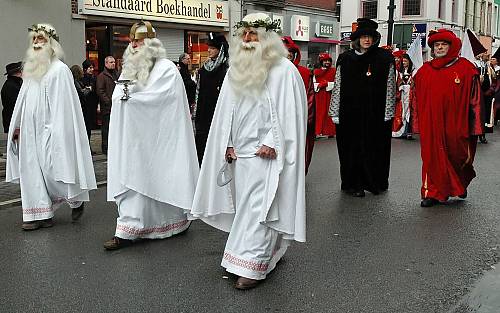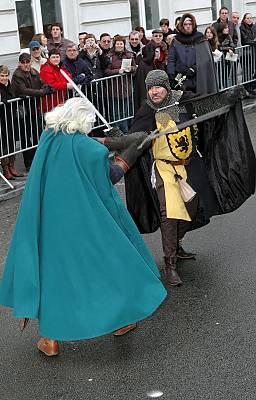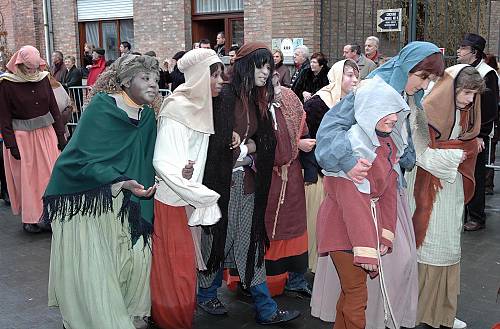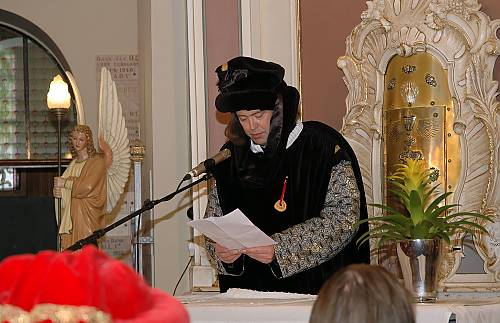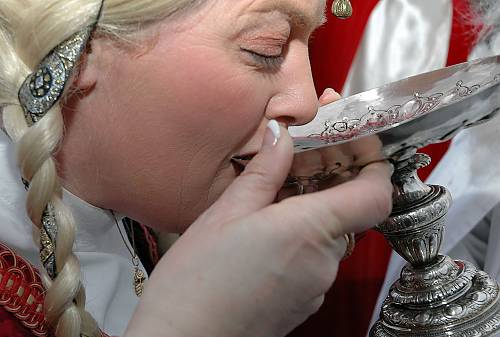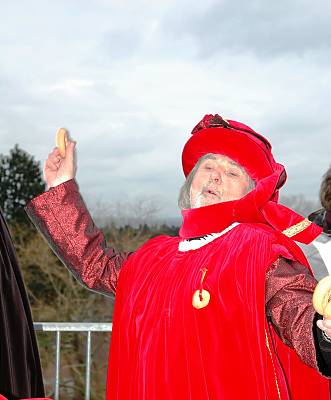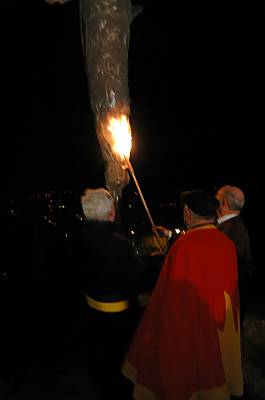Krakelingen and Tonnekensbrand, end-of-winter bread and fire feast at Geraardsbergen
Inscribed in 2010 (5.COM) on the Representative List of the Intangible Cultural Heritage of Humanity

The city of Geraardsbergen holds its annual market on the first Monday in March and celebrates the end of winter on Sunday eight days earlier, with the festival of Krakelingen and Tonnekensbrad. In the days before, shopkeepers decorate their windows, bakers bake special ring-shaped breads called krakelingen, and schoolteachers recount a tale explaining the origins of the ritual. On the day of the feast, a thousand-strong parade leaves the church of Hunnegem, led by the church dean and city councillors in historical costume. Carrying bread, wine, fish and fire, the participants make their way to Oudenberg Hill, climbing to the Holy Mary Chapel on the hilltop. Inside, the dean blesses the krakelingen and recites a prayer. The religious and secular authorities then drink wine from a sixteenth-century silver goblet containing tiny live fish, which has recently become a controversial custom. They then throw ten thousand krakelingen into the crowd, one containing a winning ticket. The prize is a golden jewel, especially created for the event. At night people gather again on the hill to light a wooden barrel, the Tonnekensbrand, to celebrate the arrival of spring. Spectators carry burning torches back down the hill to bring light to the city. The festive ritual yields a strong sense of continuity and historical awareness for its participants, evoking historical events and legends passed on from generation to generation.
